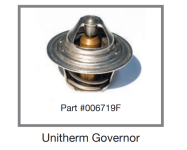- Jun 24, 2021
- 16,780
- Pool Size
- 29000
- Surface
- Vinyl
- Chlorine
- Salt Water Generator
- SWG Type
- CircuPool RJ-60 Plus
@ajw22 @JamesW or anyone else.
New Raypak 336 digital heater last June (P-336A-EN-X)...you have seen all my other threads to maximize longevity of this heater (chemicals, flow etc.). Harwil flow switch in parallel with pressure switch. Bypass is 100% to heater.
2200 RPM gives me 39 GPM, 14.3 temp rise, 2400 RPM gives me 45 GPM, 12.5 temp rise.
Started heater yesterday at 2200 RPM, same as last year. No whistling, water temp 64 F. After 24 hours heating, I went back out and the heater is whistling, water temp 84 F. Raised RPM to 2400 and whistling decreased by 80%.
Filter is clean, I can't believe there is any sediment in the heat exchanger. Burner orifices look like new. Pipe is 1.3" OD from meter, and 1" OD from behind the heater to heater. Total length is maybe 10' from meter to heater. There is no regulator on the line...straight from meter to heater.
What is the next step?
Something up with the unitherm? Why would it go bad in a year? Replace? Output water does not exceed 97 degrees, so unitherm never kick in, unless it is bad and allowing bypass.
Should I check gas pressure? How do I do that on the heater gas valve? Heater gas valve PN is 003900F
Thanks






New Raypak 336 digital heater last June (P-336A-EN-X)...you have seen all my other threads to maximize longevity of this heater (chemicals, flow etc.). Harwil flow switch in parallel with pressure switch. Bypass is 100% to heater.
2200 RPM gives me 39 GPM, 14.3 temp rise, 2400 RPM gives me 45 GPM, 12.5 temp rise.
Started heater yesterday at 2200 RPM, same as last year. No whistling, water temp 64 F. After 24 hours heating, I went back out and the heater is whistling, water temp 84 F. Raised RPM to 2400 and whistling decreased by 80%.
Filter is clean, I can't believe there is any sediment in the heat exchanger. Burner orifices look like new. Pipe is 1.3" OD from meter, and 1" OD from behind the heater to heater. Total length is maybe 10' from meter to heater. There is no regulator on the line...straight from meter to heater.
What is the next step?
Something up with the unitherm? Why would it go bad in a year? Replace? Output water does not exceed 97 degrees, so unitherm never kick in, unless it is bad and allowing bypass.
Should I check gas pressure? How do I do that on the heater gas valve? Heater gas valve PN is 003900F
Thanks






Last edited:









